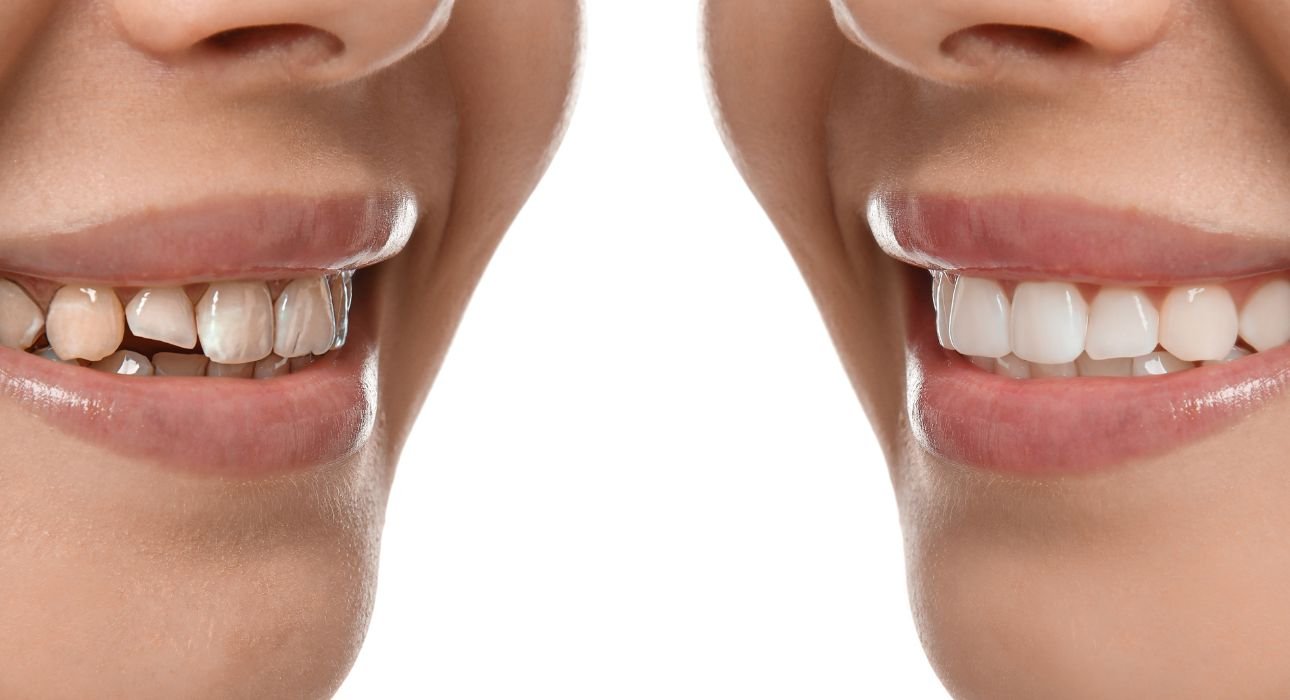Noticing Smile Gaps? You’re Not Alone
You catch your smile when you quickly glance in the mirror. You always find those tiny spaces between your teeth. Perhaps they formed gradually, or perhaps they have always been there. In either case, they are enough to make you feel self-conscious when you grin in pictures or talk in front of an audience. You’ve been advised that braces could be the solution. Composite bonding offers another choice, though.
Braces vs. Composite Veneers: Which Is Right for You?
Decisions like this are not simple. Though in somewhat different ways, both treatments claim to make your smile better. For you, which one is appropriate? Let us dissect it from the real-life standpoint of someone balancing money, time, comfort, and impact, rather than only theoretically.
No One-Size-Fits-All: Understanding the Options
What Are Composite Veneers?
Applied straight to the front of your teeth, composite veneers—ultra-thin coatings of resin material—improve the shape, colour, and spacing of your teeth. After hardening the composite under a curing lamp, dentists shape it exactly on the tooth surface. It’s like dental work combined with art. The appeal mostly comes from the speed. Usually, in one visit, you leave with a fresh smile. They’re particularly well-liked for:
- Minor gaps
- Chipped or misshaped teeth
- Quick fixes without the time or dedication braces call for
Let’s probe further, though, before you conclude they are the ideal fix.
What About Braces?
Braces—those metal or ceramic braces fastened to teeth—gradually shift them into better alignment over months or years. Braces actually move your teeth and bones, unlike veneers. They address alignment problems, biting difficulties, and jaw structure. Braces represent a long-term investment in your teeth. Usually spanning six months to two years, they take more time but produce structural, not just cosmetic, effects.
Composite Veneers vs Braces: A MECE Breakdown
Let’s keep things orderly by applying the MECE concept—Mutually Exclusive, Collectively Exhaustive. We’ll contrast these two choices across several non-overlapping areas.
1. Goals and Outcomes
Composite Veneers Are Ideal For:
- Small gaps (diastemas)
- Discoloration
- Small chips or shape anomalies
They cover flaws, not fix them.
Braces Are Ideal For:
- Misaligned jaw
- Bite correction
- Structural alignment
They offer true correction, not camouflage.
2. Time Invested
- Composite Veneers: One or two sessions
- Braces: Six to twenty-four months
It’s an instant makeover vs. long-term progress.
3. Cost Comparison
- Composite Veneers: $250–$1,500 per tooth
- Braces: $3,000 to $7,000 total treatment
If you’re just correcting two or three front teeth, veneers may cost less. For full-mouth correction, braces offer better long-term value.
4. Repairability and Maintenance
Composite Veneers:
- Last 5–7 years with good care
- Prone to staining or chipping if you smoke or drink coffee
Braces:
- Once removed, results are permanent (with retainer use)
- Long-term change in tooth structure
5. Comfort and Daily Life
Braces:
- It may be uncomfortable initially
- Require dietary restrictions
- Need regular adjustments
Composite Veneers:
- Non-invasive
- Usually, no drilling or wires
- No eating restrictions
Real-Life Experience: Emily’s Story
Emily, 29, had loathed a tiny gap between her front teeth since she left high school. Though it bothered her every time she viewed a picture of herself smiling, it wasn’t aggravating any medical issues. She discussed both choices with a Nuffield Dental dentist. Braces cost around $5,500 and take eighteen months. For four front teeth, composite veneers would run about $1,800 total, and she could be done in a week.
She chose veneers.
“I exited the clinic, and I kept grinning. I never felt the need to cover my teeth, first in years.”
Six years later, she still has her veneers and plans to replace them soon. She says she would do it again, but understands it’s not a forever solution.
So, Which Is Right for You?
Ask yourself:
- Does your gap reflect a more general alignment problem or just an aesthetic one?
- Are you looking for a temporary fix or a long-term solution?
- Are you okay with periodic replacements or seeking something more lasting?
Composite Veneers Might Be Right If You:
- Have minor gaps not affecting your bite
- Want a fast, affordable fix
- Prefer a less invasive approach
Braces Might Be Right If You:
- Have alignment or bite problems
- Want a permanent structural solution
- Don’t mind a longer treatment timeline
Final Takeaway: Your Best Smile Investment
- Veneers: Quick and budget-friendly, great for cosmetic touch-ups
- Braces: Long-term correction, ideal for deeper issues
Still unsure? Talk to a dentist or orthodontist—or better yet, both. Ask to see before-and-after examples. Discuss your lifestyle, budget, and goals. A confident smile isn’t just about looks—it’s about how you show up in the world. Whether you choose braces or composite veneers, your smile should always make you feel good.
FAQs
1. Do composite veneers hurt?
Not particularly. Most patients report no discomfort, especially since many cases require no drilling.
2. Can veneers be removed later?
Yes. Composite veneers are reversible and can be taken off or replaced without long-term damage.
3. Do braces permanently fix gaps?
Yes—if you wear your retainer. Ignoring post-treatment care can cause teeth to shift again.
4. Can you eat normally with veneers?
Mostly, yes. Just avoid foods and habits that cause stains or damage, like red wine, smoking, or chewing ice.
5. Are composite veneers covered by insurance?
Usually not, since they are considered cosmetic. Braces may be partially covered if deemed medically necessary.













Leave feedback about this